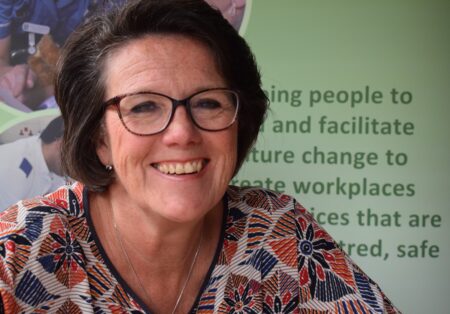Home News & Views Active learning versus passive learning
Active learning versus passive learning

Jo Odell, FoNS Practice Development Facilitator and Inspire Improvement Fellowship Lead
If I asked to you define ‘active learning’, what would you say it is? When I introduce this concept and process to the Inspire Improvement fellows, I ask them to think about a recent learning event they have attended, and then describe where they think they would place that event on a continuum of active learning to passive learning. Most people describe a learning event where one person imparts information or content to aid learning for the rest of the people in the room. I think of this as ‘passive learning’.
So what is active learning?
‘Active learning is an approach for in-depth learning that draws on, creatively synthesises and integrates numerous learning methods’ (Dewing, 2008, p 273)
The central principles for active learning (Dewing, 2010, p 23) are:
- Making multiple uses of the senses (including seeing, noticing and observing) and as expanded on by Dewing (2008), use of multiple or social intelligences
- Critical personal dialogue about past, present and future experience
- Critical dialogue with others
- Intentional action or doing (as in a practice/work related activity); ultimately doing things differently and feeling differently about it
- Enabling or facilitating the same or similar learning experiences with others in the workplace
Within the Inspire Improvement Fellowship programme there were six full day face-to-face workshops (prior to the recent Covid-19 restrictions) and I have run an active learning session for half a day on each day. Whilst I might argue that all the sessions that I facilitate enable active learning to some degree, the difference between the active learning sessions and the other sessions in the programme is that the active learning process is led by the fellows’ critical questions, which they bring from practice and are individual to them. The other sessions I decide the topic and then guide the process. The area that the fellows really find hard to engage with initially is the time spent individually at the beginning of the active learning session, engaging with their senses to reflect and use their creativity. But over time they learn to relax into this and allow their creativity to emerge and then use this to view their practice and what they are trying to discover for themselves. Once they have spent time on their own, they then enter a period of sharing and critical dialogue with the other fellows. Following this, as the facilitator, I may introduce them to some tools or theory that I think will help them further with their learning. Lastly, we finish the session by reflecting on what they have learnt for themselves and then sharing this collectively.
So can I encourage you all to think about how you can enable more active learning in your own workplaces rather than rely on the ‘passive learning’ approach , especially now we are relying much more on virtual spaces? It is possible to be creative; we don’t need to rely on a PowerPoint presentation in every setting or just on relaying information to people. How much do you remember from the last ‘passive learning’ session you attended? If you encourage people to seek out their own learning it is a more rewarding experience for all.
References
Dewing, J. (2008) Becoming and being active learners and creating. Active learning workplaces: the value of active learning. Chp 14 in McCormack, B., Manley, K. and Wilson, V. (Eds.) International Practice Development in Nursing and Healthcare. Oxford: Blackwell. pp 273-294.
Dewing, J. (2010) Moments of movement: Active Learning and practice development. Nurse Education in Practice. Vol. 10. No. 1. pp 22-26. DOI: 10.1016/j.nepr.2009.02.010.
Comments are closed.

